Both AMD and Nvidia make some of the best graphics cards, which, naturally, puts these two companies in a position where they’re always competing. It’s not just any old rivalry, though. AMD is the constant underdog, and Nvidia is the market leader that always comes out on top in some way.
But is Nvidia truly the one that AMD is competing against? No, not really. In fact, the fiercest competition for AMD’s RDNA 3 graphics cards comes from AMD itself. Here’s why that’s bad news for the GPU maker.
A skip, not a leap
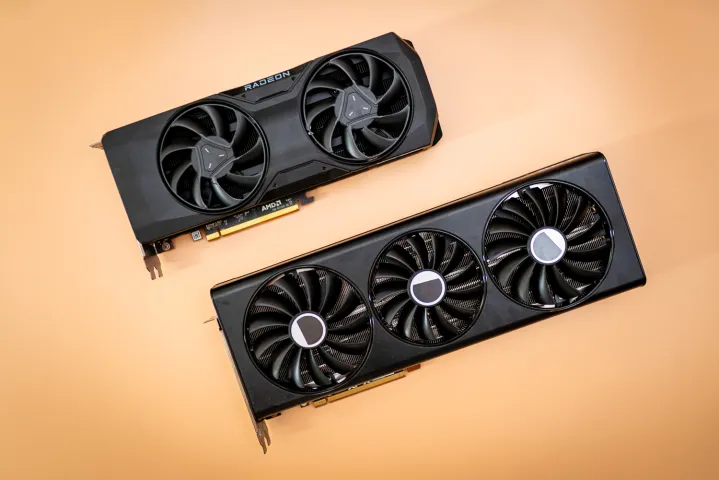
Do you know how people sometimes use the term “generational leap” to describe a huge performance boost from one gen of hardware to the next? Well, for some of AMD’s RDNA 3 lineup, calling it a skip would be more fitting. It’s certainly no big leap, and that becomes more and more true the further we move down the list of AMD’s current-gen cards.
Looking at our own testing of the RX 7900 XTX and the RX 7900 XT, there’s a marked improvement over the previous generation, but it’s not mind-blowing. The RX 7900 XT ends up about 14% faster than the RX 6950 XT, while the RX 7900 XTX comes out with a 26% lead.
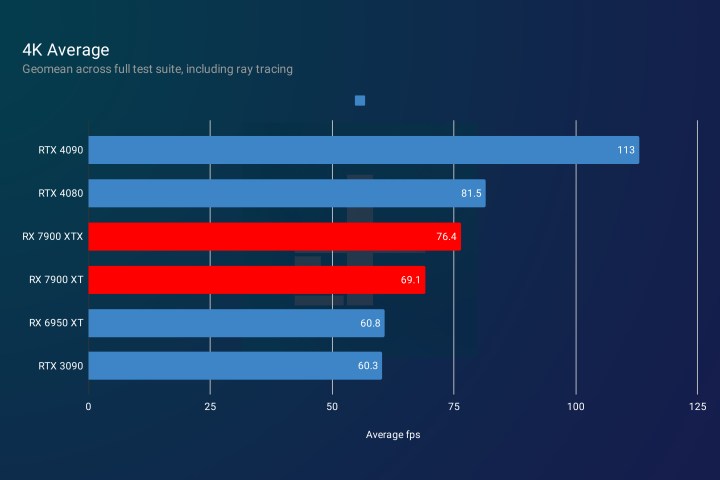
It’s not like Nvidia’s RTX 4090, which delivered an up to 68% performance boost over the RTX 3090 Ti, and a whopping 89% increase over the RTX 3090. The RTX 4080, while less impressive, still has AMD beat with a 42% lead over the RTX 3080 Ti.
If that 14% to 26% lead seems mild by comparison, then the RX 7800 XT won’t floor you, either. Depending on the title, the GPU is around 5% to 10% faster than the RX 6800 XT. It’s still significantly better than what Nvidia offers at the same price range, though. The RTX 4060 Ti 16GB comes with the same list price, but its performance is disappointing due, in part, to the narrow memory bus. Sure, there are games where it’s faster than the RTX 3060 Ti, but there are titles where it’s actually slower, too. It’s one of the worst GPUs in this whole generation.
The 7700 XT actually offers more performance than its predecessor, the RX 6700 XT, beating the RDNA 2 card by around 22%. It takes a back seat to Nvidia’s RTX 4070, though, which is up to 35% faster than the 3070 Ti at 4K.
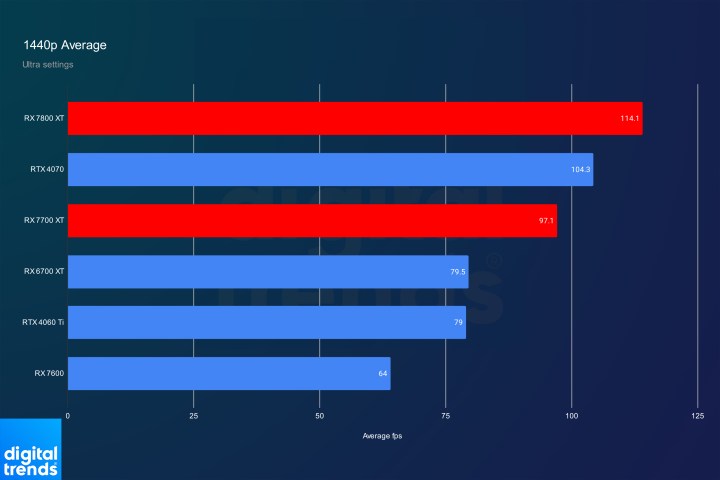
Lastly, we’ve got the RX 7600, which is actually one of the top GPUs for 1080p gaming right now. It’s certainly a better offering than the Nvidia counterpart, but it gets cannibalized by its last-gen cards, the RX 6600 and the RX 6600 XT. While it’s between 30% and 12% faster, it comes in at a very similar price point.
It’s quite telling that AMD’s greatest gen-to-gen gains come from its most budget-friendly GPU. AMD is not really competing at the high end these days, and while that’s not necessarily a bad thing, it’s clear that the generational leap just didn’t happen between RDNA 2 and RDNA 3.
Some of Nvidia’s GPUs suffer from the same problem, with the lower-end and midrange cards just not offering the kind of juice you’d expect to see for the price. However, Nvidia has an edge over AMD — its last-gen cards are often not worth buying anymore.
In AMD’s case, it’s the exact opposite.
The price doesn’t always add up

If you only consider performance, there’d be no reason not to choose RDNA 3 over RDNA 2. Sure, the gains might be small, but they’re still gains. You might as well get a few extra frames out of your new GPU, right? Except it’s not that simple, because the price also needs to be taken into consideration.
There are plenty of RDNA 2 graphics cards still left in stock, and there’s nothing wrong with them. From the RX 6600 to the RX 6950 XT, there are plenty of options for more budget-conscious PC builders to explore. Even the high-end RX 6950 XT only costs , and it’s readily available at various retailers and delivers solid 4K performance in AAA games as long as ray tracing is not a factor.
When it comes to cards like the RX 6600, RX 6600 XT, and RX 6650 XT, the scale tilts in favor of the current-gen RX 7600. All of these GPUs range from $210 to $250 after price cuts, and the RX 7600 is the best of them all, although not by any large margin. Spending just $70 extra gets you the RX 6700 XT, which is a noteworthy upgrade over the 7600.
As we climb up the ladder, it makes less and less sense to shop RDNA 3.
Seeing as the gains are small between the 7800 XT and the 6800, and the latter costs just , a more budget-oriented PC build might benefit from going with the last-gen card. The RX 6800 XT has the same price tag as the 7800 XT, although — to AMD’s credit — it launched at $650.
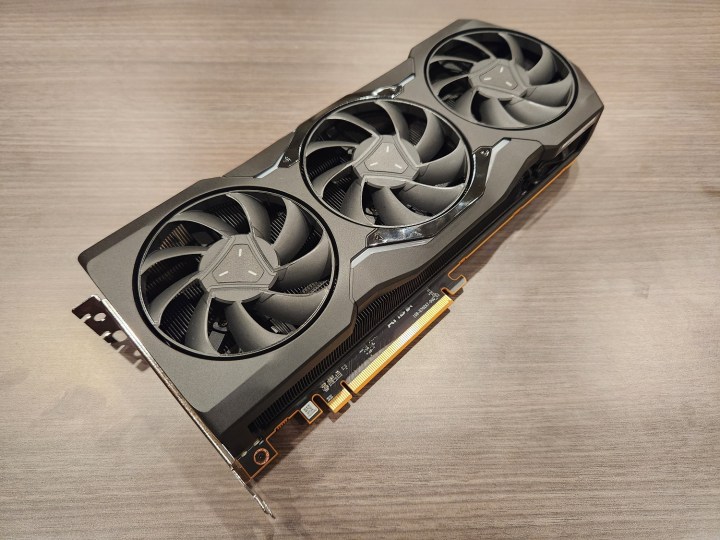
The real problem for AMD’s lineup are the RX 6900 XT and the RX 6950 XT, priced at and , respectively. Both of those cards are faster than the 7800 XT, and the price difference isn’t massive.
When it comes to the RX 7900 XTX and the RX 7900 XT, they’re both in a tough spot. They’re faster than their last-gen counterparts, sure, but is that increase worth $200 to $400? For most people, it isn’t.
Those who are building a new PC or buying a prebuilt one in 2023 may often choose RDNA 3, but with the prices the way they are, RDNA 2 remains a popular choice. And if you already own an RDNA 2 GPU, there’s little to no reason to upgrade.
This isn’t necessarily a bad thing for AMD. After all, whether the sales go to the RX 6950 XT or the 7900 XTX, it’s a net gain for Team Red. Yet, it’s still missing out on potential sales that Nvidia is raking in due to those generational leaps.
RDNA 2 or RDNA 3? It’s almost the same thing
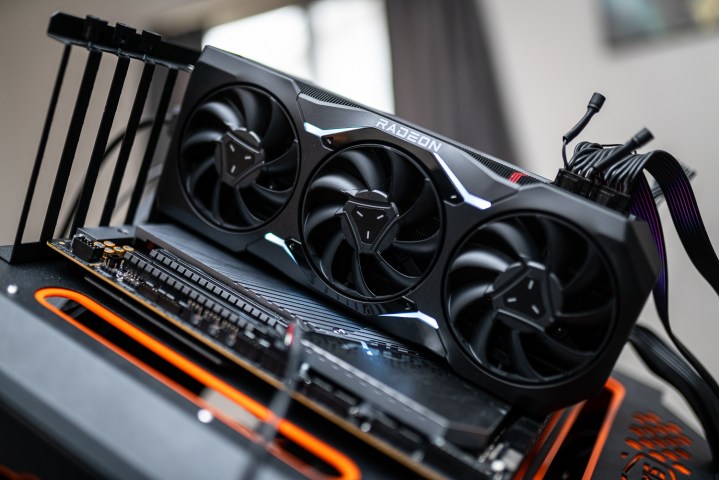
AMD’s latest GPUs are powerful, and in many cases, they deliver solid performance per dollar when compared to the outrageously overpriced Nvidia offerings. However, when you only take AMD into the equation, there just aren’t that many reasons to switch from RDNA 2 to RDNA 3.
The performance, while better, is not going to make or break your games. AMD has also mostly kept the same amount of memory on each card, so even the recent uproar around VRAM in games is not a factor here. The RX 7900 XTX is an outlier with 24GB memory, but the RX 6950 XT had 16GB, which is still plenty for AAA gaming. These graphics cards are an improvement, but they face a lot of competition from their last-gen siblings.
RDNA 3 lacks that something special that pushes gamers to pick it instead of Nvidia and, more importantly, instead of RDNA 2. While I’d still recommend the RX 7800 XT as one of the best GPUs in terms of value, I’m not going to tell you to upgrade your RX 6700 XT. There’s simply no need.
Nvidia has AMD beat here, and it’s not just because of these gen-to-gen improvements. It’s also because of DLSS 3, which generates entire frames instead of pixels and can propel an RTX 4070 to beat the RTX 4090 in gaming scenarios. More importantly, it’s only available in RTX 40-series graphics cards, and I bet Nvidia’s been making bank just on DLSS 3 alone. The GPUs no longer need to be that impressive when they can be artificially boosted to appear better than they actually are.
AMD has FSR 2.0 and even FSR 3.0, but it’s not locked to a specific generation of cards. That’s nice of AMD, but it gives little incentive to upgrade, which means it’s shooting itself in the foot a bit here. RDNA 3 comes with some other upgrades, such as AV1 encoding and decoding or support for DisplayPort 2.1, as well as improved AI capabilities and a (slight) step up in ray tracing, but none of that adds up to what Nvidia offers with DLSS 3.
I still believe that AMD is a much more competitive option around the $250 to $500 mark, and that’s good news for Team Red. If only it could shed some more of that leftover RDNA 2 stock, the current-gen cards might shine by comparison. Right now, while solid, they really tend to blend in with their last-gen counterparts, so if you already have RDNA 2, you might as well sit this generation out.




